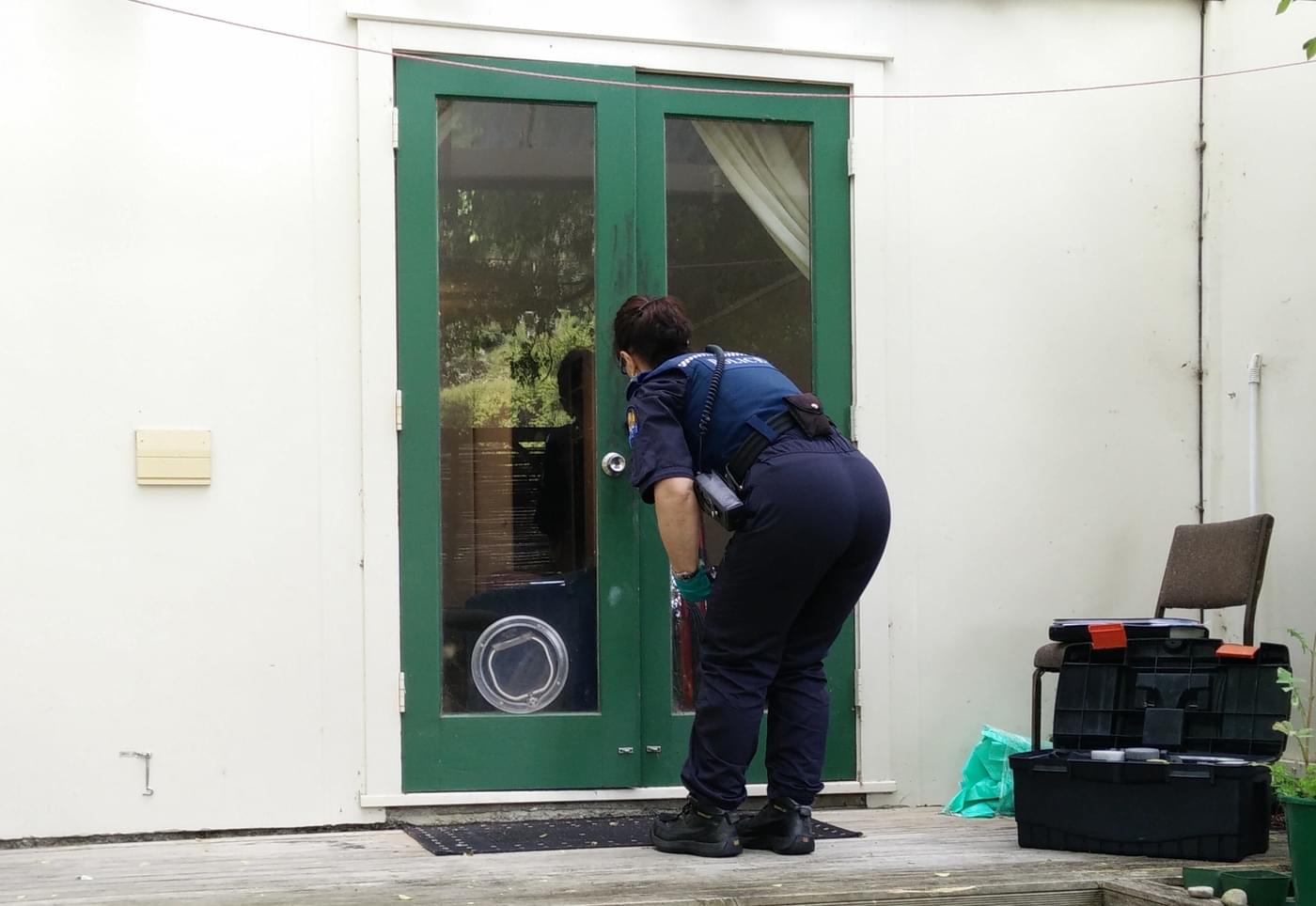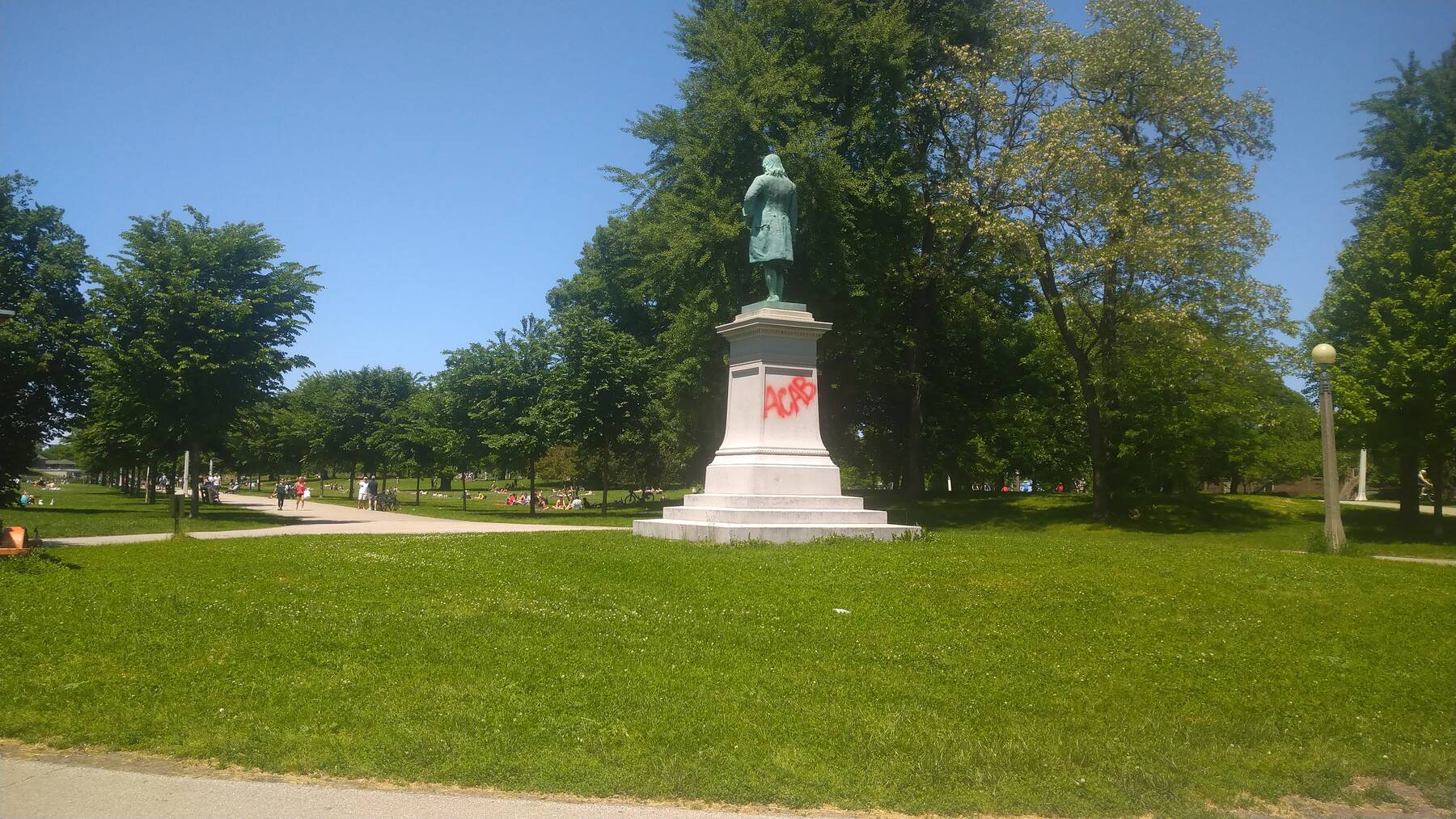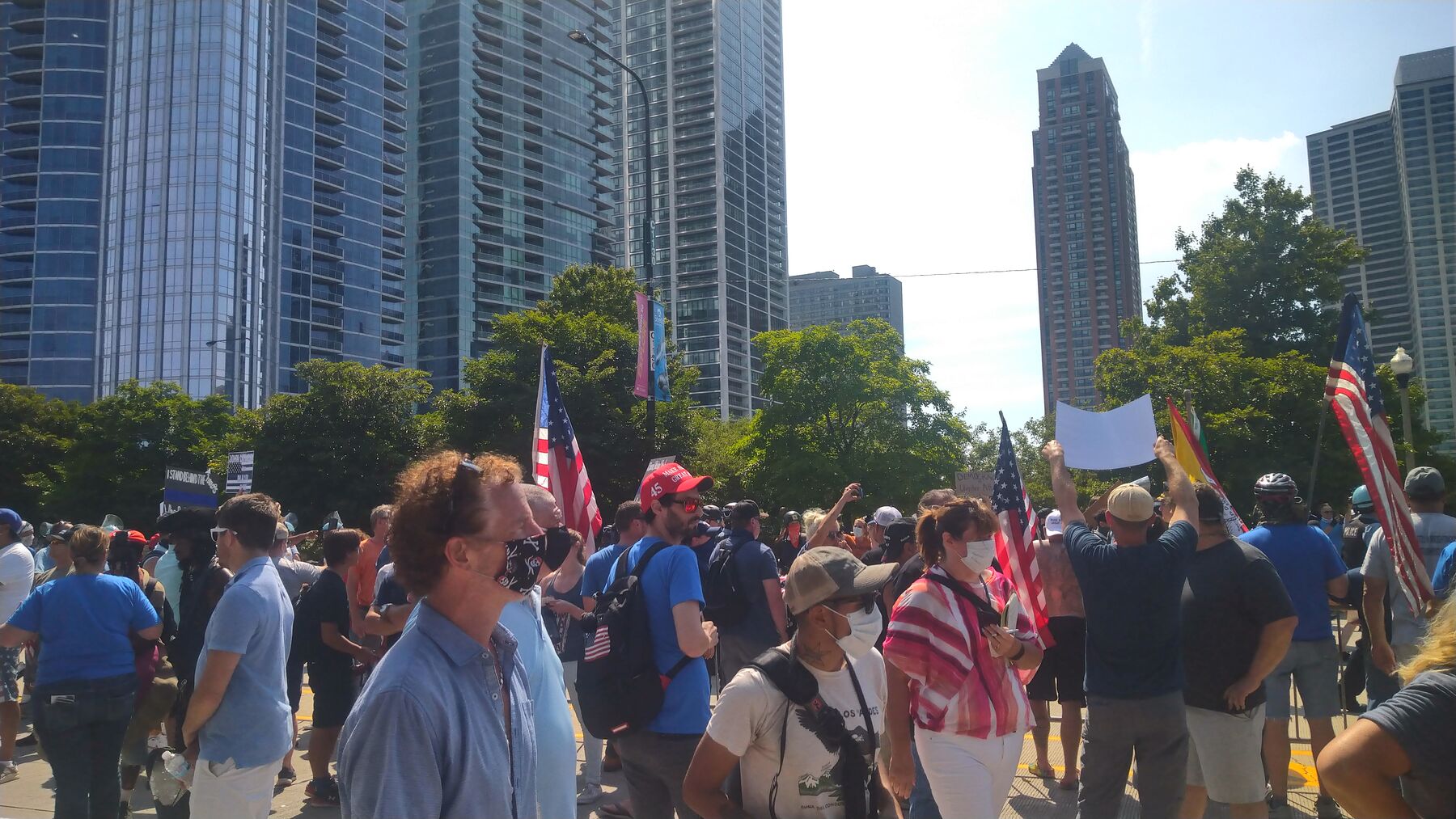Why I No Longer Hate the Police

My mother told me that when I was very young, I would always look out the window in the evenings for the police car that would often sit on our street each night during the late shift. On a night when a car didn’t appear, and my father couldn’t get me to sleep, he would put me in a stroller and walk around until we saw one. I grew up on shows like Dragnet and games like Police Quest, and when I told my neighbors that I wanted to be a cop when I grew up, they’d tell me, “You’re too smart for that.”
Years later, when I was in university, I watched friends get harassed by police. I’d watch videos of excessive force leading to accidental shootings. I had friends who were facing thousands of dollars in fines and legal fees, as well as jail time or community service, for possession of marijuana. A black friend of mine had the police called on him, while he was jogging in his own neighborhood. I watched police illegally search vehicles on my street in Cincinnati, and my friends and I would call out “careful, pigs” when we saw police vehicles out on the side of the road.
A much younger me would probably join with much of the anti-police rhetoric we see today. Yet, despite all of this, I remember that police are still human. Back when I still had my faith, every Sunday I’d sit in a pew next to a good friend whose father was a cop, and a church elder. In my current city, a police officer I know hosts traveling folk musicians for large concerts in his home. In New Zealand, a police officer did a full investigation after a break-in, even though it was likely to be a fruitless endeavor. I’ve watched police officers not only de-escalate situations, but do some amazing and incredible things, beyond what they needed to do for their job.

Body Cameras Tell a Different Story
Both patrol car cameras and police body cameras provide a tremendous amount of context to situations, something which has never been available before. They’ve been pivotal in showing misconduct and holding police accountable, such as when Trooper Matthew Spina of Connecticut threatened to throw someone over a bridge during a traffic stop1. But they’ve also been incredibly effective in clearing police in controversial incidents.
In September 2019, protests were held in St. Paul, Minnesota over a police officer fatally shooting Ronald Davis. People were crying out for justice, yet eventually police body camera footage revealed that Davis rammed a police vehicle, and within seconds, ran toward the police car and repeatedly attempted to stab the officer with a knife2. Similarly, De’Von Bailey was a man shot in Colorado Springs in August of 2019. Many activist protested his death, both on the street and on social media, claiming the shooting was murder. However, the combination of the 911 call and police body camera footage clearly showed that De’Von had a firearm, and attempted to pull the firearm as he ran from police officers3.
Donut Operator, a former police officer turned YouTuber and skateboard shop owner, does some amazing breakdowns of police shootings based on body camera and security camera footage. His coverage of these events really opened my eyes to the complexities of these police shootings, and the differences between how they’re often portrayed in the media compared to how they actually transpired. I don’t agree with all his breakdowns, such as in a recent video where he praises a police officer who shoots a man who took a hostage in Salt Lake City4. The officer didn’t attempt to de-escalate the situation, and it could have gone horribly wrong had the officer missed and hit the hostage. The family of the hostage taker also criticized the actions as unnecessary5.
Still, the body camera provides a truly incredible tool for objectively evaluating police actions. They help hold both police and the people they investigate accountable. In Louisville, after a fatal shooting in May, police officers were relieved of duty, and the police chief was fired, after it was found the officers did not have their body cameras activated6. As more police departments adopt body cameras, hopefully we will see an increase of zero tolerance policies for officers who intentionally disable them.
Recent Events
The activism and riots in the aftermath of the George Floyd incident in Minneapolis were the result of video taken from onlookers, after Floyd was on the ground. The video is graphic, but it also lacks the context of everything that happened up to that point. The prosecutor refused to release the actual body camera footage, until it was eventually leaked by the Daily Mail on August 3rd, 20207. Eventually, a country judge ordered that the full footage be released.
Floyd is a highly polarizing case, and I’m not going to make any comments on it, other than that I suggest you watch the full body camera footage from the incident. There are several videos, one fifteen minutes in length from the perspective of Officer Tou Thao, and another from the body cameras of Officers Thomas Lane and J. Kueng, that is an hour in length8.
No matter what your current opinion is of the incident, if you haven’t seen them, you really need to watch the full body camera videos in entirety. They paint a drastically different narrative that the one that’s been fed to the world by the major media networks. The fact that the prosecutors withheld this evidence is nothing short of pure media manipulation.
Activists
Carey Wedler is an activist who I have a lot of respect for. In 2018, she put out a video describing an incident where police raided the house of an activist she was staying with. The police entered while she was in the shower. She quickly jumped out and dressed, only to be detained with everyone in the house. She was on her period, and repeatedly asked to use the bathroom. Assured a female police officer was on the way, she waited for hours as she bled on herself. The female officer who arrived, gave her advice on how to get the blood out of her skirt. Despite all of this, she made a video about why she doesn’t harbor hatred for police over this incident.
“…I don’t buy into the myth of the violent war on cops, because the statistics prove it’s not real. And I know that, while police advocates shun the problem of unarmed people getting killed, there are countless more who are beaten and maimed. But what I also now believe is that demonizing police at every turn hasn’t stopped the wave of police violence and killings. However much I disagree with the tactics, the authority and the institution, it remains that many of these officers are acting with good intentions. They may be enforcing injustices, but because of wide spread societal programming that obeying authority is good, they think they’re doing good deeds. It’s not their fault this was driven into them, or anyone else. Many cops actually do want to help others and keep them safe, even if the laws they’re enforcing make the problems worse and increase crime…” -Carey Wedler9
In her video, Wedler carefully navigates the waters of opposing submission to authority, while also warning her audience of the risks of dehumanizing police. The cry of protesters with catchphrases like “All Cops are Bastards”, creates a new other and a way to rationalize violence towards another group of human beings by removing our collective humanity.
Disbanding the Police
In the wake of George Floyd, there have been continual calls to disband entire police departments. America has disbanded a police force once before, in 2003 under the government of George W. Bush, in a place called Baghdad. An immediate disbanding of police, without any foresight into reconstruction, led to massive looting, violence, and the emergence of warlords creating their own structures of control10, not entirely unlike the region of CHAZ in Seattle, except at a considerably larger scale.
Supporters of disbanding will often bring up Camden, New Jersey, where the municipal police force was disbanded in 2012. But Camden wasn’t a situation where the police force was dismissed without forethought. Instead, a regional police department was formed, with funds and personnel being transferred into the new organization11. There was a plan, and a clear path forward, which maintained police presence during the transition.

The wording has changed in some media from disbanding to defunding the police, with an emphasis on moving funds from the police into other community programs. However, cutting funds works at cross purposes with changes that would increase police accountability. Many departments lack the money to purchase body cameras12. One might argue that cutting funding would force departments to move money away from military grade equipment, but most of that equipment isn’t paid for by municipalities. It comes from the Federal Government via the 1033 Program implemented under George H. W. Bush13.
In Texas, the city of Austin voted to cut $150 million, nearly a third, of their police budget14. The mayor of Seattle vetoed $4 million in cuts to her own police department, but the city’s Police Chief, Carmen Best, still resigned as she faced a nearly $20,000 cut to her income15. It’s already difficult for police departments to afford good training and personnel, and I do not see these proposed cuts ending well.
Police are Human Beings
When I was in my twenties, one of my best friends said that he wanted to run for public office. He mentioned how he’d run on a message of needing fewer police, and how it would lead us to be safer. A younger me believed in this hardliner, libertarian message. Age and personal experience has led me to realize how short signed this perspective was. CHAZ is a perfect example of how removing police, without any plans for reconstruction or foresight, leads into mob rule and chaos.
“I will permit no man to narrow and degrade my soul by making me hate him.” -Booker T. Washington
There are problems within the justice system, but the actions of police are just an end symptom to a much larger problem. The 2020 documentary series Outcry is an excellent example of how corrupt prosecutors and defense attorneys, with conflicts of interest, can easily deprive an individual of due process and lead to wrongful convictions. There are problems in our legal system that allow some crimes to go unpunished, while wrongfully convicting others, but those problems are complex and stretch across all levels of government, prosecution and enforcement. Modifying public policy, improving training, ending qualified immunity (for police and prosecutors), decriminalization of non-violent drug offenses, and legalization of cannabis are all policies that can be, and have been used, in existing cities to improve the justice system, to the betterment of society.

I do not deny that there are bad police who use unnecessary force. But when I think back to watching police shows as a child, or the police officers I’ve known personally in my life, I still believe that the vast majority of them join the police force for good purposes. Sometimes those purposes may become corrupt, or officers might be afraid to speak out against other officers for fear they could, one day, also make an unforgivable mistake. Yet, we must still remember that all police are human beings. Many have families, children, friends and are part of their neighborhoods and communities. To say that all police are bad, simply due to their choice of profession, is to create a new other. It is dehumanizing, and allows justifiable violence against human beings who have taken a job that’s essential to maintaining a just and civil society.
-
Who the f*** do you think you are!’ Connecticut state trooper berates driver during traffic stop, sparking investigation. Sheridan. 21 May 2020. New York Daily News. ↩
-
Ronald Davis shooting breakdown - St. Paul, MN. 24 Sept 2019. Donut Operator. (YouTube) ↩
-
De’Von Bailey shooting breakdown - Colorado Springs. 20 August 2019. Donut Operator. (YouTube) ↩
-
hostage situation QUICKLY ended by accurate cops - police shooting breakdown. 9 August 2020. Donut Operator. (YouTube) ↩
-
GRAPHIC: Video Shows Officers Shoot Alleged Hostage Taker. 7 Aug 2020. Hawkins. Breitbart. ↩
-
Louisville police chief fired after officer bodycams found to be off during fatal shooting. 1 June 2020. Madani. NBC News. ↩
-
EXCLUSIVE: Police bodycam footage shows moment-by-moment arrest of George Floyd for the first time - from terror on his face when officer points gun at his head, sobbing before he’s shoved into squad car and begging to breathe as his life drains away. Gould. 3 August 2020. Daily Mail. ↩
-
RAW: George Floyd Minneapolis police body camera footage. 10 August 2020. 10 Tampa Bay. (Video) ↩
-
Why I stopped hating the police. 6 September 2018. Wedler. (2m:59s Video) ↩
-
No End in Sight (2007 Documentary) ↩
-
Camden County to form regional police department. 2 August 2011 (Updated 31 March 2019). Statehouse Bureau. NJ.com. ↩
-
Most Region’s police agencies want body cameras but grimace at cost, Times sampling shows. 30 August 2020. Cross, Kasarda. The Times of Northwest Indiana. ↩
-
Why America’s police look like soldiers. 25 June 2020. Vox. (Video) ↩
-
Austin cuts police budget by 1/3 amid national ‘defund’ push. 13 August 2020. Coronado. AP/ABC. ↩
-
Seattle Mayor Vetoes City Budget That Proposed Cuts to Police . 21 August 2020. Caldwell. Wall Street Journal. ↩